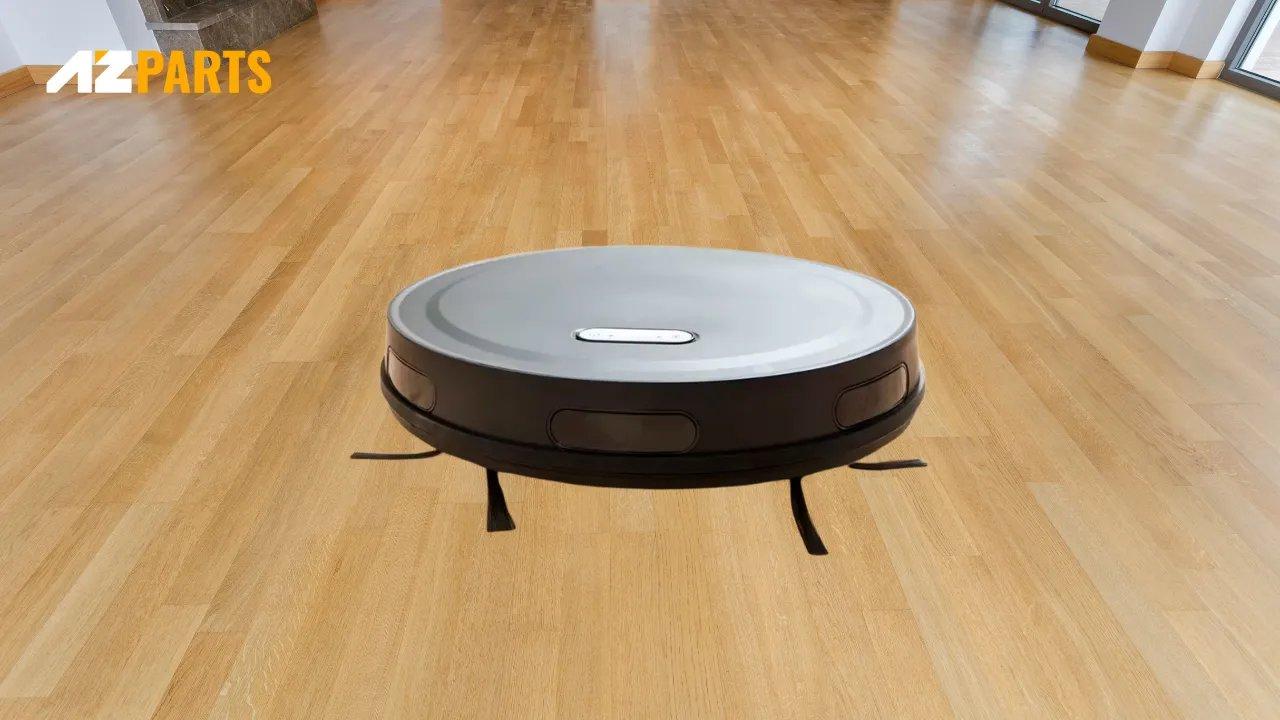How-To Guides
How to Clean Vacuum Filter: Step-by-Step Guide
AZparts Team
Updated on December 4, 2025
6 min read
A dirty vacuum filter can seriously reduce your vacuum’s performance, making it harder to clean and even damaging the motor over time. Regular cleaning is a simple yet essential task that helps your machine work like new. In this guide, AZParts walks you through the easy steps to clean your vacuum filter properly and shows you when it’s time to replace it with a high-quality part.

1. What you’ll need
- A sink or a small container filled with clean water
- A soft microfiber cloth or towel for drying
- A drying rack or a clean, airy spot for the filter to dry
- A soft-bristle brush (like an old toothbrush) to remove dust
- A trash bin for emptying loose debris

Tools need to prepare before cleaning vacuum filter (Source: AZParts)
2. Identify your filter type
Before you begin cleaning, it’s important to know exactly what kind of vacuum filter you're dealing with. Different filter types require different cleaning methods, and using the wrong one can damage the filter or reduce your vacuum’s performance.
- Foam Filter: This is a soft, sponge-like filter commonly found in bagless vacuums or as a pre-motor filter. Foam filters are usually washable and can be rinsed under lukewarm water. Just make sure they are completely dry before reinstalling.
- Pleated Paper or Synthetic Filter: These filters are usually made of folded material that looks like an air filter. They trap fine dust and are often found in upright or canister vacuums. Some are washable, but many are not. Always check the manufacturer’s instructions. If it’s not washable, tap off excess dust and replace it when it looks worn or clogged.
- HEPA Filter: High-Efficiency Particulate Air (HEPA) filters capture very fine particles, including allergens. Some HEPA filters are washable, but many are not and need to be replaced after a few months of use. If your vacuum uses a non-washable HEPA filter, never rinse it—doing so can ruin the filtering material.
Knowing your filter type helps you clean it safely and keep your vacuum running efficiently. If you're unsure, check your vacuum’s manual or look for markings on the filter itself.
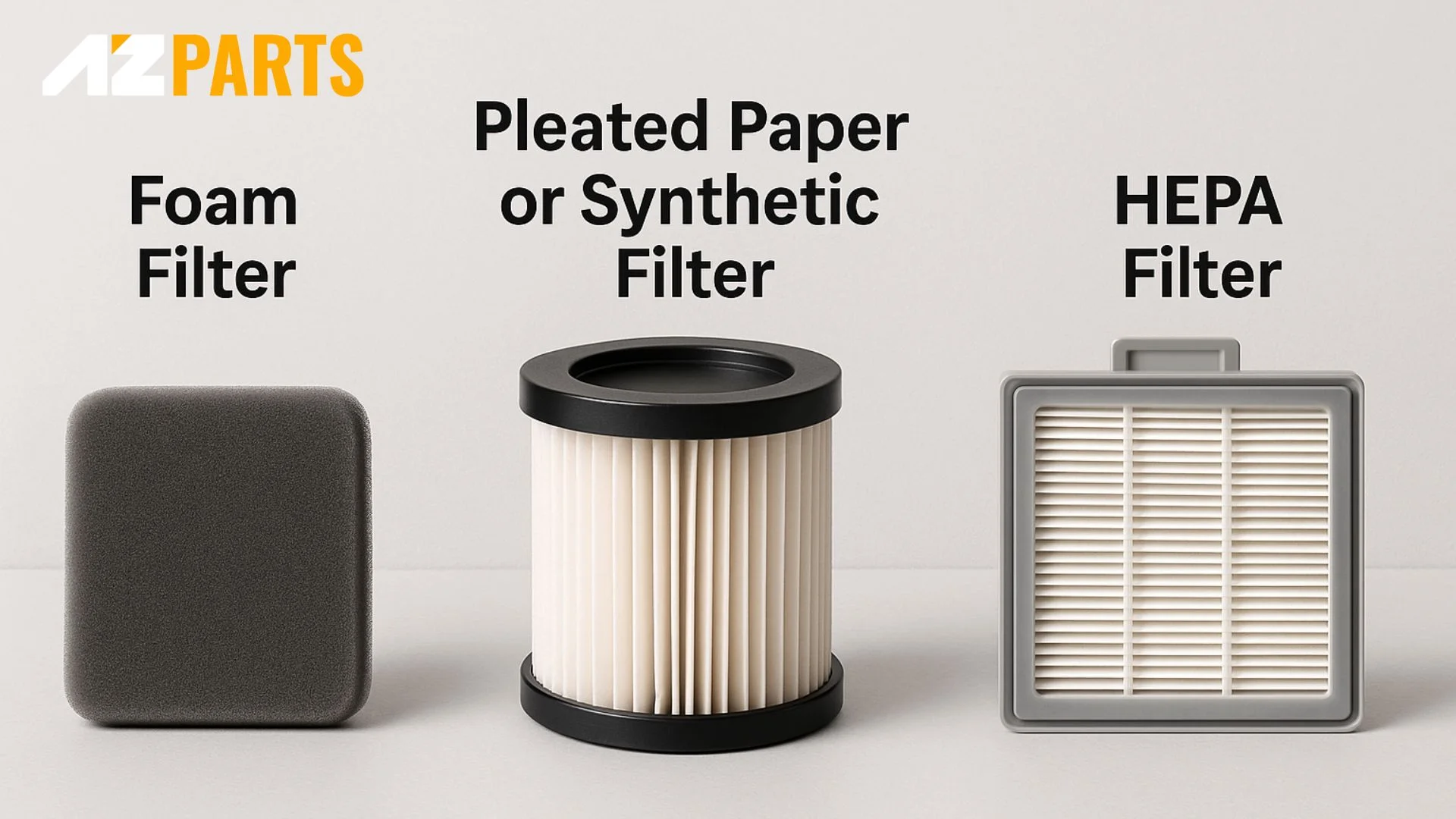
Each type has different ways to cleaning (Source: AZParts)
3. How to Clean Each Vacuum Filter
Once you've identified your filter type, it's time to clean it the right way. Each filter has different materials and maintenance needs, so following the proper method will help maintain suction power and extend your vacuum's life.
3.1 Foam Filters
Foam filters are washable and designed to be reused many times. Here's how to clean them effectively:
- Create a cleaning solution: Fill a small bowl or sink with hot water and add a couple of drops of mild dish soap or all-purpose cleaner.
- Soak and clean: Submerge the foam filter and gently press it to work the soapy water through the sponge. If the water turns very dirty, drain and make a fresh batch, repeating the process until the water stays mostly clear.
- Rinse thoroughly: Rinse under clean water until all soap is gone.
- Dry completely: Press the foam gently inside a microfiber towel to absorb excess moisture. Then leave it on a drying rack to air dry for at least 24 hours. Only reinstall it once it's completely dry.
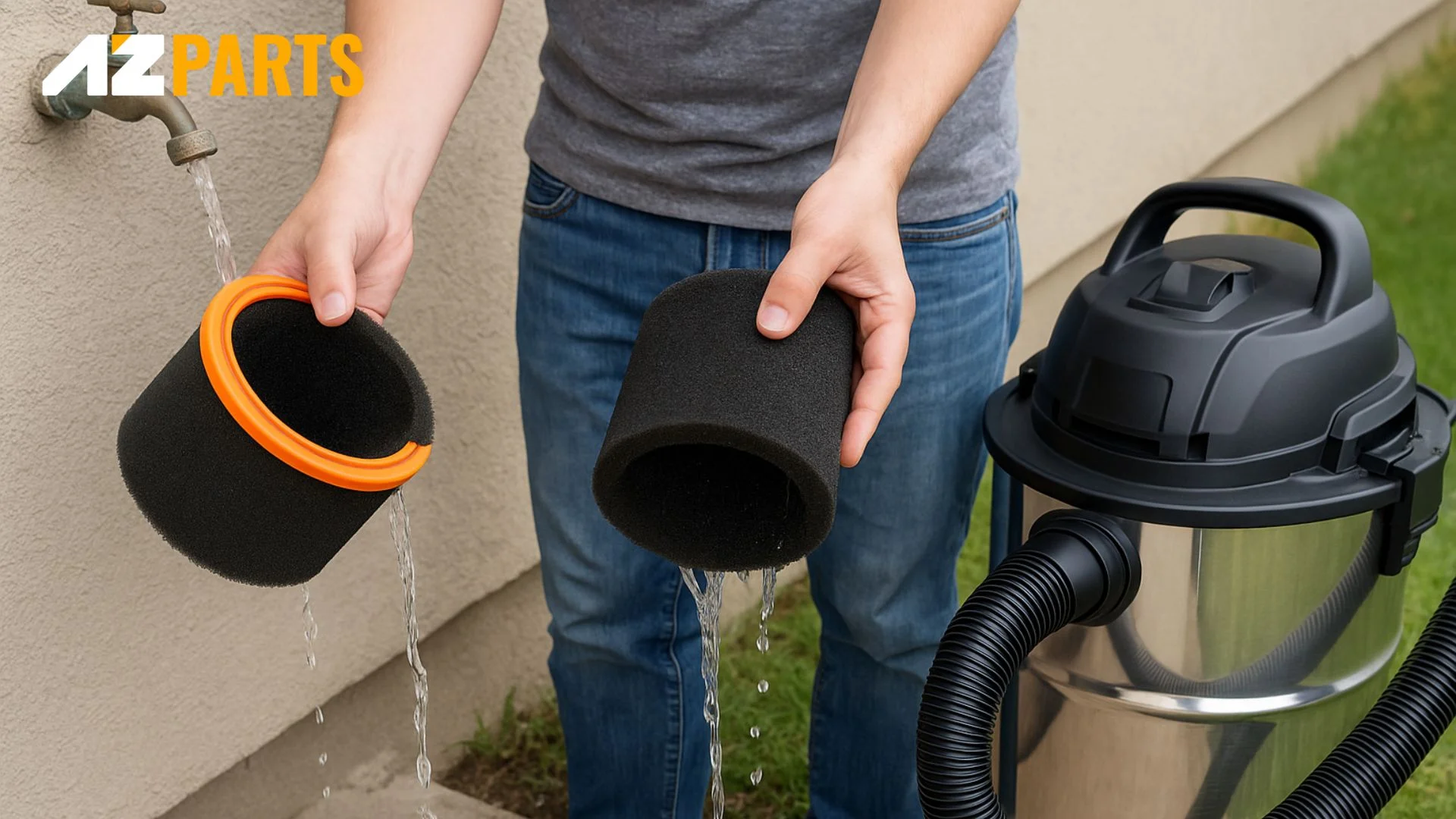
Cleaning foam filter in vacuum (Source: AZParts)
3.2 Pleated Paper or Synthetic Filters
These filters are more delicate, especially paper ones, and require dry cleaning or careful rinsing.
- Pleated paper filters: Remove the filter and gently tap it over a trash can to shake loose the dust. Use a soft brush (like an old toothbrush) to dislodge stubborn debris. Never wash or soak a paper filter.
- Synthetic fiber filters: Similar to pleated paper in appearance but washable. After tapping out dust, rinse the filter briefly under cool running water. Avoid using soap. Gently pat it dry with a towel and let it air dry completely on a rack before putting it back.
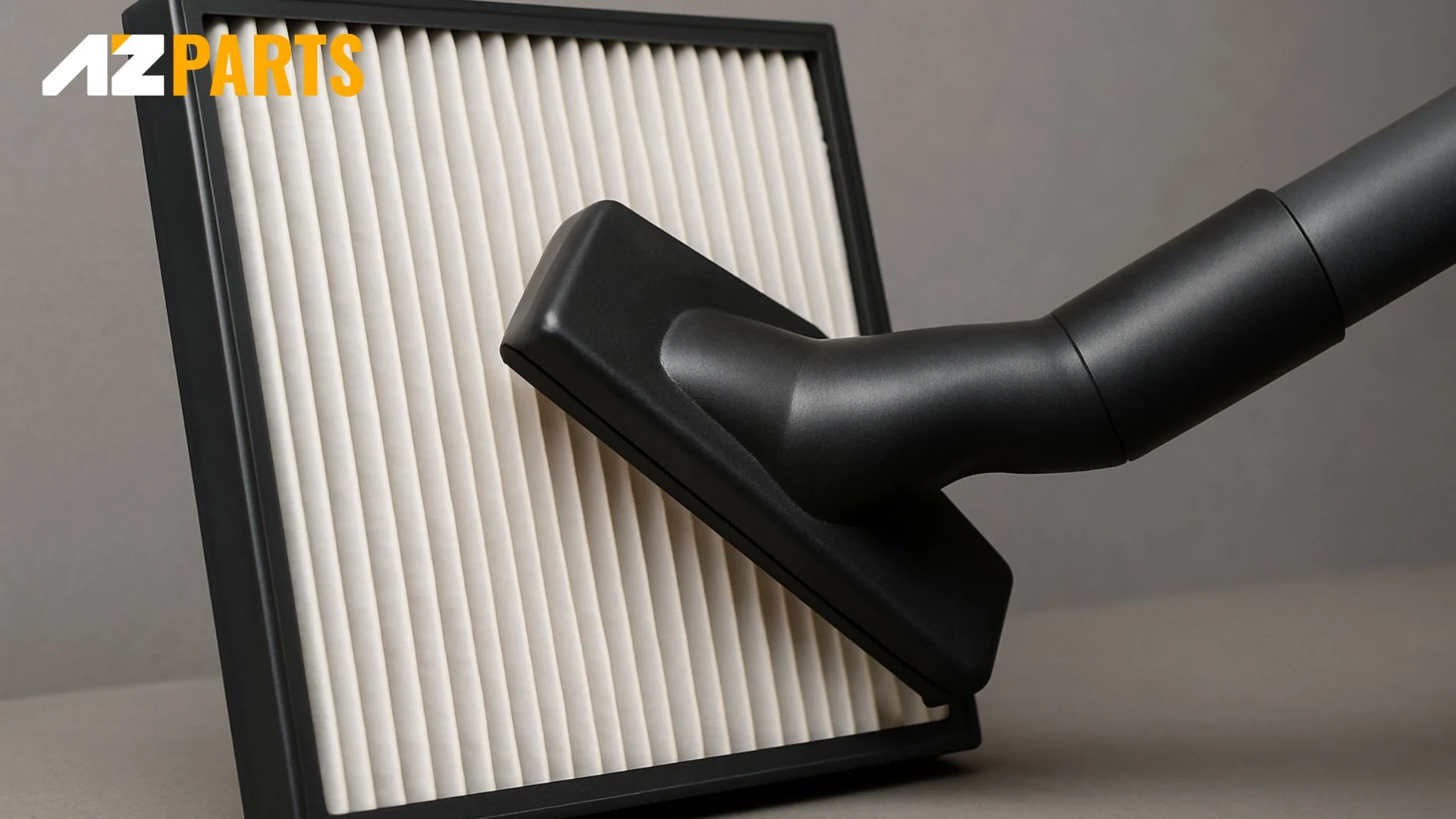
Cleaning pleated paper or synthetic filters (Source: AZParts)
3.3 HEPA Filters
HEPA filters are highly efficient and designed to trap tiny particles like allergens and fine dust. They require special care:
- Dry cleaning: If the HEPA filter is not washable, remove it and lightly tap it against a trash can or outside railing to loosen dust. Do not brush or rinse it.
- If washable: Some HEPA filters are labeled washable. In that case, rinse with cool water only—no soap. Let the water run until it flows clear. Do not scrub or twist the filter. Lay it flat to dry for 24 hours before reinserting.
Tip: Always check your vacuum's user manual to confirm whether your filter is washable or not.
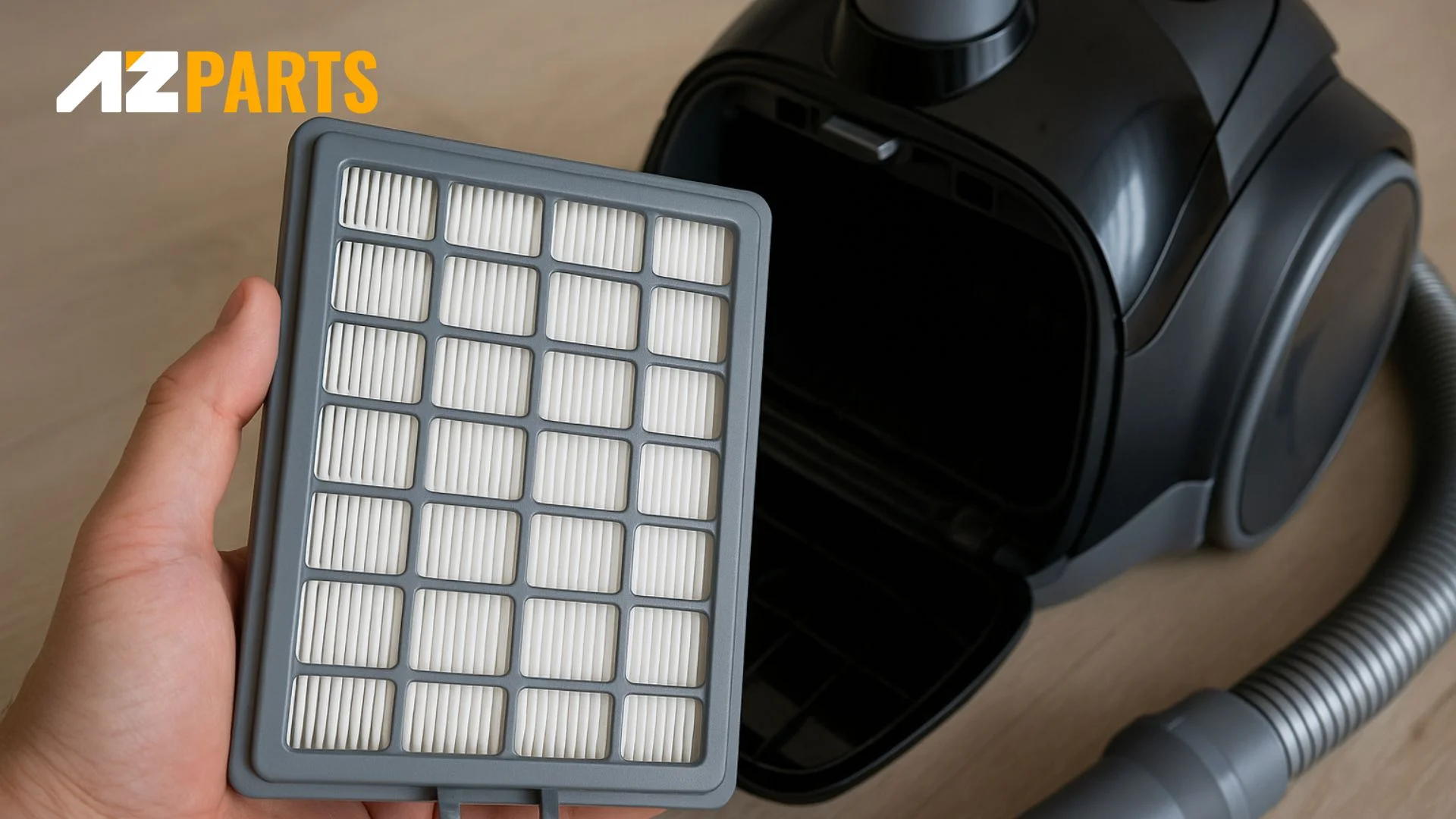
Cleaning HEPA filters (Source: AZParts)
4. When to Replace Your Vacuum Filter
Over time, even the most durable vacuum filters lose their ability to trap dust and debris effectively. Knowing when to clean or replace your filter helps protect your vacuum’s performance and the air quality in your home. At AZParts, we provide a wide range of vacuum parts, including high-quality replacement filters to suit every need.
- Foam Filters: Foam filters are typically washable and reusable. As long as they aren’t torn, overly worn, or losing their shape, you can continue to clean and reuse them. However, if the foam starts to break down or has a persistent odor even after washing, it’s time for a new one.
- Pleated Paper or Synthetic Filters: These filters usually aren’t meant to be washed. While you can gently tap out dust or brush them off a few times, they do wear out quickly. Most manufacturers recommend replacing them after every few uses, especially if suction drops or the filter looks discolored or clogged.
- HEPA Filters: HEPA filters are designed to trap extremely fine particles, including allergens. Some are washable, but many are not. If your HEPA filter is not washable, lightly tapping out dust can extend its life a little, but you’ll still need to replace it according to the schedule in your vacuum’s manual — usually every 6 to 12 months depending on usage. For washable HEPA filters, replace them when cleaning no longer restores airflow or they appear damaged.
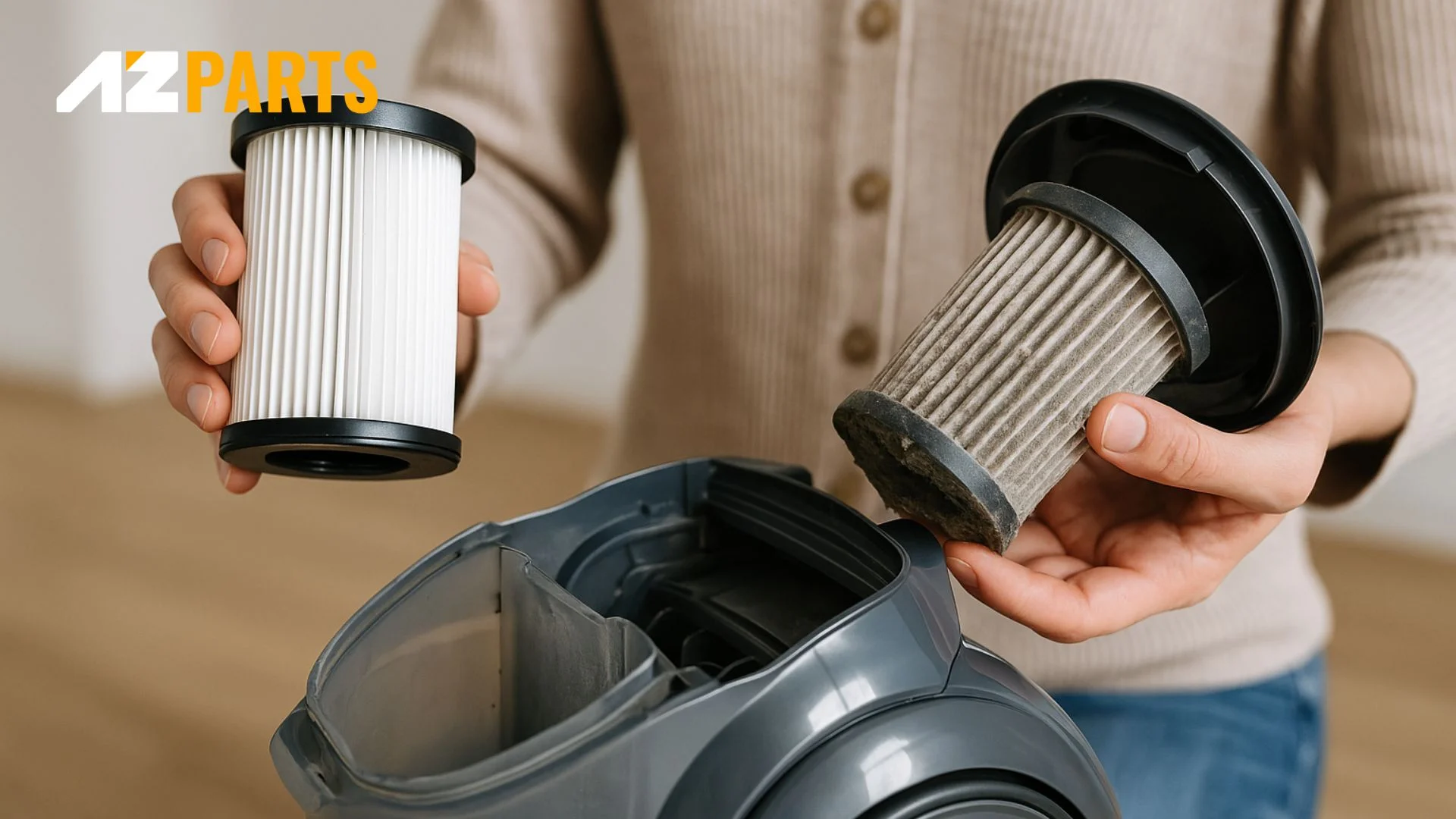
Regularly cleaning vacuum filter is the best way to extend its lifespan (Source: AZParts)
Keeping your vacuum filter clean or replacing it at the right time is essential for maintaining strong suction and healthy indoor air. By identifying your filter type and using the correct cleaning method, you can extend the life of your vacuum and keep it running at peak performance.
When it's time for a replacement, trust AZParts for high-quality, compatible vacuum parts that help you get the most out of your machine. Whether you need a foam, pleated, or HEPA filter, AZParts has what you need to keep your home cleaner, longer.
Learn more about other vacuum's mantaining tips:
Contact Info
Address: 8 The Green, Ste A, Dover, Delaware 19901-3618, United States
Email: support@azparts.com
Vacuum
Further Reading
Further Reading




